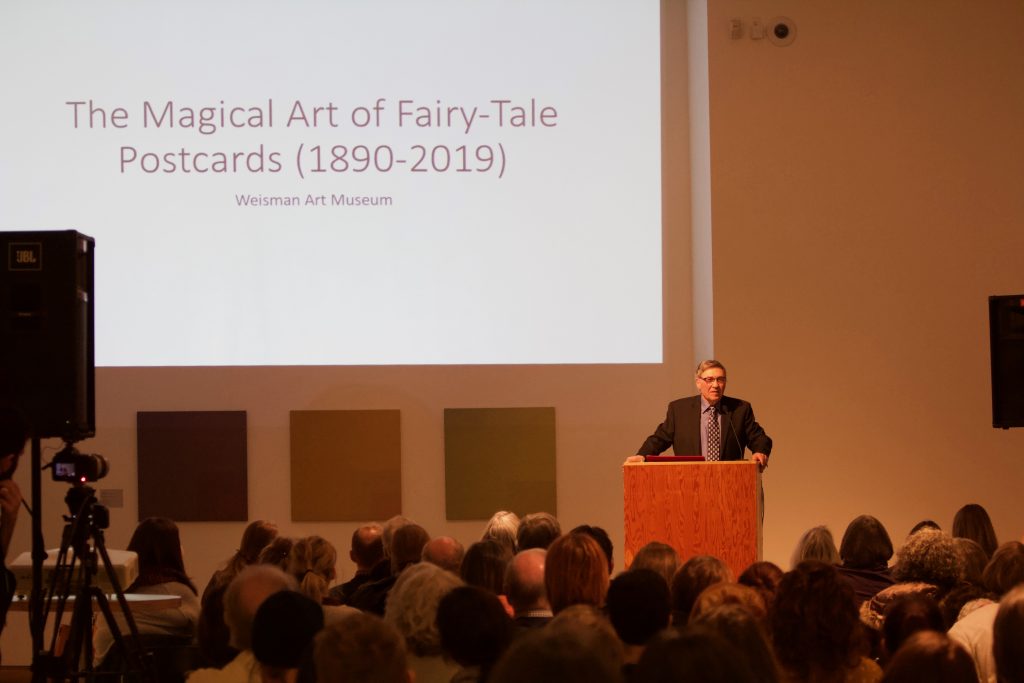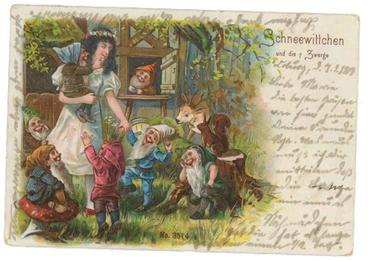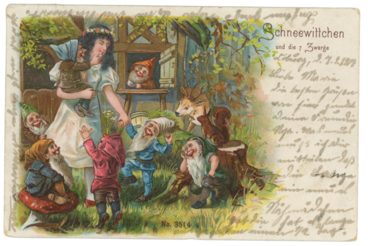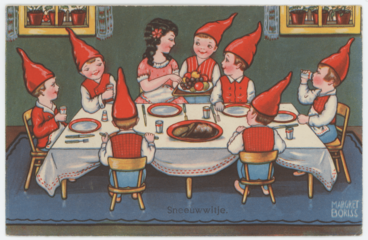Jack Zipes, University of Minnesota professor emeritus of German and comparative literature, returned to campus Wednesday night to deliver a lecture in conjunction with WAM’s exhibition, The Wonderful World Before Disney. An acclaimed scholar of myth, folk, and fairy-tales, Zipes discussed the past and contemporary social and political roles of these stories, turning to his unique collection of international fairy-tale picture postcards for visual examination and evidence. WAM received over 3,000 of Zipes’ fairy-tale postcards, a number of which are currently on display through July 7.
Zipes began his UMN teaching career in 1989 and throughout his life, has endlessly roamed flea markets, theaters, garbage dumps and antique sales searching for fairy-tale postcards and adding to his collection. Inspired by their distinct imagery and representations, he has translated and published a number of collections and titles including the Complete Fairy Tales of the Brothers Grimm, The Sorcerer's Apprentice: An Anthology of Magical Tales, Tales of Wonder: Retelling Fairy Tales through Picture Postcards, and currently for sale in the WAM shop, Fearless Ivan and His Faithful Horse Double-Hump.
Zipes argues that fairy-tales continue to be relevant today due to their emittance of hope and the historically conditioned lived experiences deeply embedded into their stories. In circulating these stories, information of our adaptation to changing environments is shared and adopted.
“It seems to me that we are predisposed to the fairy-tale, whether it in a book or on a postcard, because it tends to call for a metaphorical means through which we can then distance from our experiences, sort them out, and articulate or enunciate their significance for us and for other people in our environment.”
In his lecture, Zipes explained that although many of the postcards depict children, they are by no means meant for an adolescent audience. Instead, their elaborate and delicate imagery are meant to provoke nostalgia, enlighten us, and give us pleasure. On a more political note, fairy-tale postcards deny nationalistic tendencies. The images on the cards are from other worlds and unknown countries. They unable us to see the world in a different light.
“It’s difficult to determine what exactly drives people to engage with fairy-tale postcards.” Zipes said. “I’ve postulated that we tend to live our lives through fairy-tales without realizing how much a role they play in our daily lives through different modalities, and the fairy-tale postcard is another key example of how we have envisioned and continued to envision our lives through fairy-tales.”
Fairy-tale postcards have had a long history; from their “golden age” in the early 20th century, to their abrupt hiatus in the 1930s due to WWII and fascism, to their re-emergence in 1945. As for the future of fairy-tale postcards, Zipes reports it remains unclear. In today’s tech-savvy and social media-dependent 21st century, the value of the postcard’s primary function, one of cheap and swift communication, has quickly diminished.
“If it has a function today, it is as nostalgic ephemera. The fairy-tale postcard recalls, as it always has, another realm in time, while suggesting that the joys and struggles of past-times have never changed,” Zipes said.
“Through their images, we understand how storytelling vitalizes our lives and provides a bit of hope that our lives might end happily, as most fairy-tales do.”



